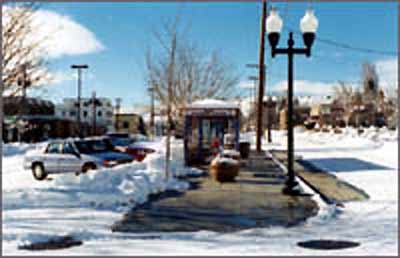Direct Use Geothermal
Hot Water Systems
Direct use geothermal refers to the use of hot water close to the Earths surface which is piped directly into facilities and used to heat buildings, or other applications.
Some cities pipe the hot water under roads and sidewalks to melt snow.
District heating applications use networks of piped hot water to heat buildings in whole communities.

Geothermal reservoirs of low to moderate temperature 20°–150°C (68°–302°F) are used for heating homes, offices, and greenhouses; in aquaculture and food processing plants; and a variety of other applications.
These applications provide a savings in energy costs to the consumer, and produce only a small percentage of the air pollutants emitted by burning fossil fuels.
People at more than 120 locations (some of which include as many as 500 wells) are using geothermal energy for space and district heating, including a few locations where waste heat is used for snow melting.
These space and district heating systems are developed and owned by individuals, small businesses, and municipalities. They are located mainly in the western United States.
Vegetables, flowers, houseplants, and tree seedlings are raised in nearly 40 greenhouse complexes heated by geothermal energy.
Approximately 30 aquaculture projects raise catfish, tilapia, shrimp, alligators, tropical fish, and other aquatic species.
Industrial applications include food dehydration, laundries, gold mining, grain drying, mushroom culture, and sludge digestion.
Dehydration, the drying of onions and garlic, is the single largest industrial use.
In addition, there are approximately 220 geothermal hot water resorts and spas throughout the United States alone.
Globally, direct use geothermal heating is fast becoming a leading choice of alternative energy wherever it is available.
Return From Direct Use Geothermal to Home Page